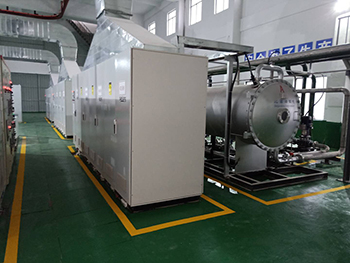Ozone Oxidation Treatment of Dyeing Wastewater
Ozone has the ability to decolorize all dyeing wastewater, which depends on the oxidizing ability of ozone. Ozone can destroy the color-forming and color-auxiliary groups of these dyes, thereby achieving the decolorization effect. However, the effect of ozone on various organic dyes is different. It takes 2 minutes to decolorize 90% of basic dyes, while it takes 5 minutes for direct dyes. In contrast, azo dyes are more easily oxidized.
Sankang 3×40kg/h ozone generator is used in the decolorization project of printing and dyeing wastewater
The decolorization reaction of ozone on pigments can be explained from the oxidative decomposition of ozone on conjugated л-electron systems. The common basic components of dyes are o-hydroxyazo pigments. When these compounds react with ozone, ozone first attacks the hydrazine (which almost always exists in this form in solution) with electrophilicity. For example, phenolphthalein of hydroxybenzene methane pigments produces color and discoloration through the reversible opening and closing of the lactone ring, so it can be used as an indicator. Alkaline phenolphthalein reacts easily with ozone.
Ozone undergoes a 1.3-addition reaction at the electron-rich C=C bond, which can cut off the pigment skeleton and thus decolorize. When ozone reacts with the typical triphenylmethylamine-based pigment malachite green, it simultaneously attacks the nitrogen and carbon skeleton (C=C bond) at the dimethylamine site, which is the same as the reaction with phenolphthalein. When azomethine-based pigments with a C=N bond react with ozone, ozone reacts electrophilically with the nitrogen atom of the C=N bond. Ozone simultaneously attacks the C=N bond and the dimethylamine group to form an oxazolidine ring, and the conjugation is cut off and decolorized.






